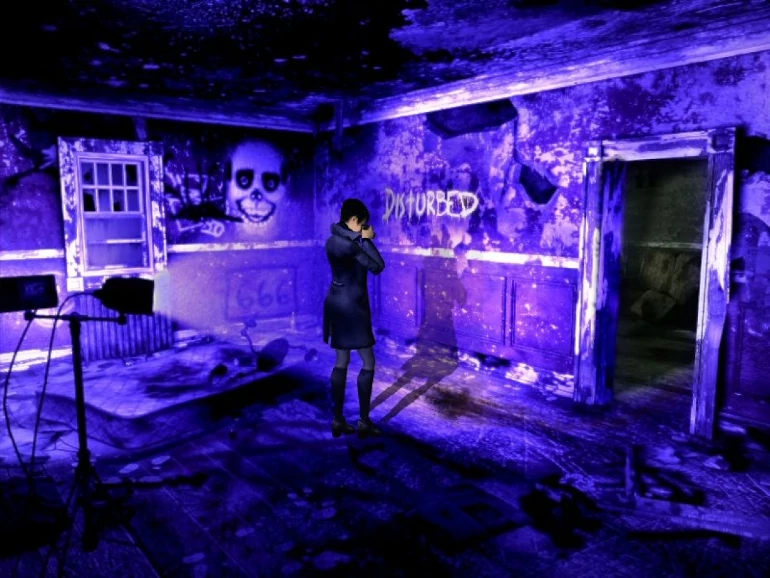Still Life, an Adventure Like the Old Ones

The plot of Still Life, created by the developers behind both versions of Syberia, puts us in the shoes of Victoria McPherson, a brilliant young FBI agent investigating a series of serial murders. With five victims and no solid leads—just a mountain of circumstantial evidence piling up—Victoria begins to show signs of fatigue and stress.
Because of this, our protagonist decides to take a break and heads to her father’s house in Chicago to rest. However, Victoria doesn’t get much relaxation. Instead, she stumbles upon one of her grandfather’s old case files and starts reading. Strangely, Victoria’s current case bears a striking resemblance to this one from the past…
Still Life delivers a heavy dose of tension—exactly what adventure gamers ask for: a gripping story, rich characters, plenty of puzzles, and the exploration of dark, mysterious environments. From its eerie and obsessive beginning in the shadowy corners of Chicago to its bittersweet and challenging conclusion in 1920s Prague, this game offers an experience that won’t be easily forgotten.
Features of Still Life:
- Rich and intriguing characters.
- Investigation of crime scenes from horrific serial killings.
- Challenging puzzles seamlessly integrated into the story.
- Meticulously detailed environments.
- Impressive animations and movements.
- Gripping cinematic scenes.
Unlike other genres like strategy games, the point-and-click adventure Still Life has been designed for both PC and console players, and fans of this style have generally been satisfied with the results across all platforms. In this case, we’re looking at a game that, as mentioned before, aims to return to a fairly classic gameplay style—highlighting key objects and solving various puzzles throughout the story. This approach will please most players, though Xbox users might find the controls a bit less comfortable. Let’s dive in…
The Story of Still Life
Victoria McPherson is a brilliant young FBI agent investigating a series of serial murders. The body count has reached five, and with no real leads—just a mountain of circumstantial evidence—Victoria starts showing signs of fatigue and stress.
She decides to take a breather and heads to her father’s house in a Chicago suburb to rest; after all, the Christmas holidays are coming up. But Victoria doesn’t get much downtime. Instead, she finds one of her grandfather’s old case files and starts reading. Oddly enough, Victoria’s current case bears a striking resemblance to this one from the past—leading her straight to a killer with the same MO…
Throughout the story, we’ll control both Victoria and her grandfather, each in their own time period and investigation. The two narratives intertwine at key moments, pulling the player deeper into the adventure.
Limited Dialogue
In Still Life, we’ll come across various objects and people we can talk to. However, the dialogue system feels a bit lacking—instead of choosing between different conversation paths or topics, we’re limited to two buttons: one for personal topics and another for professional ones. We can either keep talking or end the conversation to continue our investigation.
The game includes subtitles for dialogue, though in the copy we had access to, there were some syncing issues between the spoken lines and the text. It’s not a major problem, but hopefully, it’ll be fixed before the official release.
In the Xbox version of Still Life, we noticed that movement controls, object selection, and accessing inventory items can feel a bit clunky—sometimes frustratingly so, especially during critical missions.
On the other hand, the puzzles we encounter aren’t overly complex, though as the story progresses, we’ll find ourselves in situations that require careful thought to navigate successfully.
"Invisible Walls"
Still Life prioritizes visuals above all else, but it’s the small details that sometimes hurt the game’s quality. We’ve already mentioned the lack of dialogue options, but that’s not the only limitation—the environments don’t offer the freedom we’d expect in modern games. In certain areas, we’ll find places we can’t access or paths we can’t take due to the infamous "invisible walls."
Still Life also suffers from some slowdown when transitioning between scenes. To climb stairs or go through doors, we have to press an action button and then wait for a brief loading screen before entering the next area.
In short, this is a game that will generally please fans of the genre, though it falls a bit short of what the market currently offers.
Gameplay
 MechAssault 2: Lone Wolf – The Fight Continues
MechAssault 2: Lone Wolf – The Fight Continues Demon Stone - Forgotten Realms: Live the Legend
Demon Stone - Forgotten Realms: Live the Legend Red Dead Revolver – The Ultimate Western
Red Dead Revolver – The Ultimate Western Armed and Dangerous - Armed and Very Dangerous
Armed and Dangerous - Armed and Very Dangerous Dead or Alive 3 - Review for Xbox
Dead or Alive 3 - Review for Xbox Halo: Combat Evolved (Halo 1) for Xbox
Halo: Combat Evolved (Halo 1) for Xbox Bust a Groove 2: Why It's Still the Dance Game to Beat
Bust a Groove 2: Why It's Still the Dance Game to Beat Legend of Legaia: A Battle for Humanity's Survival
Legend of Legaia: A Battle for Humanity's Survival Metal Slug X: A Revamped Classic for the PlayStation
Metal Slug X: A Revamped Classic for the PlayStation

Leave a Reply